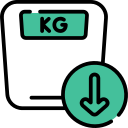Q. Can I do push-ups if I have disc herniations?
Doctor Answer is medically reviewed by SecondMedic medical review team.
Yes, you can do push-ups if you have disc herniations - but it's important to keep in mind that the extent of your exercise should depend on the severity and location of your injury. As with any physical activity, it's important to consult a medical professional before beginning or attempting any new exercises.
That said, there are some push-up variations that may be better suited for those affected by disc herniations; as performing certain movements may cause more strain on an already weakened back area. It is best to start at an intensity level that is within your comfort zone and slowly increase resistance over time as you build strength and stability.
A study published by the American Chiropractic Association found that stationary bent knee wall push-ups were shown to effectively reduce upper body muscle fatigue in healthy individuals with lower back pain when compared to traditional full range of motion push-ups. This modified version places significantly less stress on both the neck and lumbar spine while still providing a solid workout for many muscle groups in the torso - namely the triceps, deltoids (shoulders), chest muscles, abdominals, low back posture muscles - which helps minimize pain associated with disc herniation symptoms & improve relevant motor skills & funcionality within those muscle groups. Additionally: it has been suggested by some physical therapists/doctors for people dealing with chronic lower back pain due to herniated discs that starting out using Swiss ball assisted crunches instead of traditional floor crunches might be an advisable choice due to their potential capacity for improved flexibility & form control; this could also apply when selecting an appropriate core strengthening exercise such as Push Ups (i suggest )
Finally – Remember even though you can do push ups if you have disc herniation remember listening to how your body feels after each repetition is one key component towards a successful recovery! If at any point during execution of exercise causes discomfort or increases pain then pause exerciseprogeny until sensation reduces then resume exercise or select alternative movement modalities recommended by medical providers such as manual therapy techniques like massage or myofascial release etc..
Related Questions
-
What is adjuvant therapy, and how does it differ from primary cancer treatment? | Secondmedic
-
Cancer Oncology Cancer Surgery Are you getting or do you plan t
-
Cancer Oncology Cancer Surgery Is non-hodgkin's lymphoma curabl
-
Cancer Oncology Cancer Surgery What are some advancements being
-
What types of cancer are typically treated with chemotherapy? | Secondmedic












